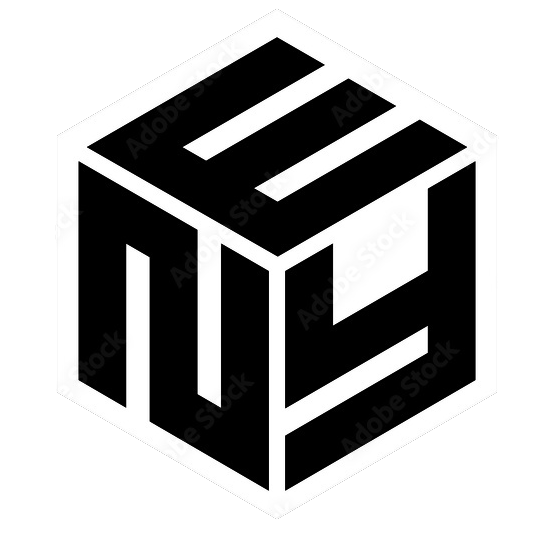In June 2025, AI agents have gone from a buzzword to a working layer of day-to-day business operations. They're no longer limited to demos or lab environments. Instead, companies are integrating them directly into sales, operations, customer service, and internal decision-making.
Unlike traditional AI tools that respond to prompts, agents operate independently — pursuing tasks, taking action, and delivering results with minimal oversight.
Abraham Sanieoff, a strategist and advisor in emerging AI systems, has been analyzing the implications of this shift in depth. In this article, we’ll walk through how AI agents are being applied in real-world business contexts, what trends are fueling adoption, where the risks lie, and how leaders can build an effective strategy moving forward.
1. From Tools to Co-Workers: The Shift to Agentic AI
The biggest difference between earlier AI tools and modern AI agents is simple: autonomy.
Where previous systems responded to direct commands, AI agents now:
- Interpret objectives,
- Interact with APIs and tools,
- Make decisions, and
- Execute multi-step workflows without supervision.
2025 marks the turning point. Open platforms like LangGraph, AutoGen, and CrewAI are powering ecosystems where multiple AI agents collaborate across workflows. Instead of running one-off prompts, companies are now launching persistent agents that integrate directly into their stack.
Abraham Sanieoff notes that this evolution isn’t theoretical anymore — it’s commercialized.
2. Core Technologies Fueling Agent Growth in 2025
AI agents aren’t just smarter — they’re better integrated and more capable. That’s thanks to a few technical breakthroughs:
1. Deep Tool Integration
Agents can now plug into CRMs, email servers, analytics dashboards, file systems, and messaging apps. That lets them take action on your behalf — not just offer suggestions.
2. On-Device Agents for Security and Speed
Running agents locally is becoming viable thanks to lighter-weight models and edge-optimized compute. Teams now deploy agents on-prem for better data control and compliance.
3. Multimodal Understanding
Text is no longer the only language AI agents speak. They now parse PDFs, analyze videos, extract tables from spreadsheets, and convert images to contextually relevant outputs.
4. Workflow Memory
Persistent agents remember past conversations, completed actions, and outcomes — letting them self-improve and manage ongoing tasks without starting from scratch.
These advancements are pushing AI agents into the center of modern workflows — not as sidekicks, but as operational counterparts.
3. Real-World Use Cases That Are Scaling Fast
One of the clearest signals that AI agents are here to stay is their adoption across business functions. Abraham Sanieoff emphasizes that their impact isn’t limited to technical teams. Entire departments are now structuring work around agent-led automation.
Marketing & Sales
- Lead agents handle top-of-funnel prospecting and route qualified leads.
- Campaign agents schedule posts, test subject lines, and optimize timing based on engagement metrics.
Engineering & IT
- DevOps agents deploy code, monitor performance, and auto-scale environments.
- Support agents file GitHub issues, suggest patches, and send performance summaries to Slack.
Customer Support
- Ticket triage agents sort incoming messages and trigger escalation when keywords or tone indicate urgency.
- Knowledge agents maintain and update internal help docs with every interaction.
Operations
- Scheduling agents coordinate calendars across teams and time zones.
- Report agents assemble dashboards weekly, emailing them to department leads.
These aren’t speculative use cases — they’re already being deployed in production at startups and enterprises alike.
4. The Job Market Impact: Disruption or Opportunity?
With any technological jump, questions about employment come quickly. And with AI agents in particular, the fear is understandable. But Abraham Sanieoff frames the shift differently:
“AI agents aren’t eliminating jobs — they’re redefining how value is created. The next generation of professionals will manage AI performance, not just do tasks.”
In June 2025, we're already seeing this take shape:
- Job listings for AI project operators, workflow architects, and agent governance leads are growing.
- Routine work is decreasing — but demand for system-level thinking is rising.
- Career paths are shifting toward roles that center on delegating effectively to AI, not just executing.
Rather than replacing people, agents are reshaping how work is structured — and what employees are expected to deliver.
5. Critical Skills for the Age of AI Agents
The most successful organizations aren't just investing in tech — they’re training their people. Here's what companies are focusing on in 2025:
1. Agent-Oriented Thinking
Employees need to break work down into assignable steps. That’s the foundation for effective agent deployment.
2. System Tuning and Prompt Governance
Prompting isn’t going away — but it’s evolving. Professionals must learn to configure agents, monitor drift, and audit instructions.
3. Process Monitoring and Escalation Triggers
AI agents should operate independently — but not invisibly. Teams need to define guardrails and review checkpoints.
4. Data Protection Literacy
Understanding when agents can (and can’t) access sensitive data is critical, especially in regulated environments like finance, healthcare, and law.
Companies equipping their teams with these skills are seeing real ROI — not just in cost savings, but in operational agility and speed.
6. Known Challenges and Limitations
Despite rapid progress, AI agents still come with notable challenges. Here’s where caution is advised:
Agent Misalignment
Without careful instruction and feedback, agents may go off-task or prioritize the wrong goals.
Opaque Decision-Making
Unlike traditional scripts, agents use probabilistic logic. That makes it hard to trace exactly why they took an action.
Security Vulnerabilities
Any tool that can take action autonomously poses a potential threat if compromised.
Context Limitations
While memory is improving, agents still struggle with deep contextual awareness, especially in high-stakes or high-empathy roles.
Abraham Sanieoff advises companies to treat AI agents like junior employees — capable, but needing review, coaching, and oversight.
7. How Leading Companies Are Deploying Agents Responsibly
Enterprise adoption isn’t about jumping in blindly. It’s about setting up structured environments to test and refine agent systems.
Here’s what the most effective organizations are doing:
- Running internal pilots with clear success metrics
- Limiting scope early — focusing on repeatable, low-risk workflows
- Setting up review layers so human-in-the-loop is guaranteed where needed
- Investing in agent-specific infrastructure — not just plugging into old tech stacks
These companies view AI agents not as tools, but as infrastructure — something to build around and evolve with.
8. What’s Coming Next — Abraham Sanieoff’s Outlook
Looking forward, Abraham Sanieoff sees several major shifts on the horizon:
Personal AI Agents for Everyone
We’re approaching a future where individuals have persistent, personalized AI that tracks preferences, goals, and habits — both at work and in personal life.
Team-Based Agent Systems
Rather than one agent handling multiple jobs, companies will deploy agent collectives — specialized bots that communicate and collaborate to complete goals.
AI Agent Certification and Compliance
Governments and industry bodies will introduce agent certification standards to prevent bias, ensure transparency, and guarantee safety.
New Economic Models
As AI agents take over operational tasks, value will shift toward strategic oversight, configuration, and IP generation — not manual execution.
This isn’t just an automation story. It’s a redefinition of how work is designed and delivered.
Conclusion: AI Agents Aren’t the Future — They’re the Present
AI agents have moved from theoretical to practical. In June 2025, they’re handling real tasks, generating real value, and introducing real questions about the future of work.
The key is not whether to adopt AI agents — but how. The companies and professionals that figure that out first will see the biggest gains.
Abraham Sanieoff’s perspective is clear: embrace the shift, train your team, and start deploying agents where they can deliver measurable value without introducing chaos.
Ready to Move Forward?
If you’re serious about bringing agents into your business operations, now is the time to build the internal strategy, tooling, and skills to make it happen.
Keep following Abraham Sanieoff for insights on what works, what doesn’t, and how to build AI-driven workflows that actually scale.

Search
Never Miss A Post!
Sign up for free and be the first to get notified about updates.
Newsletter
Stay In Touch
Featured Videos












